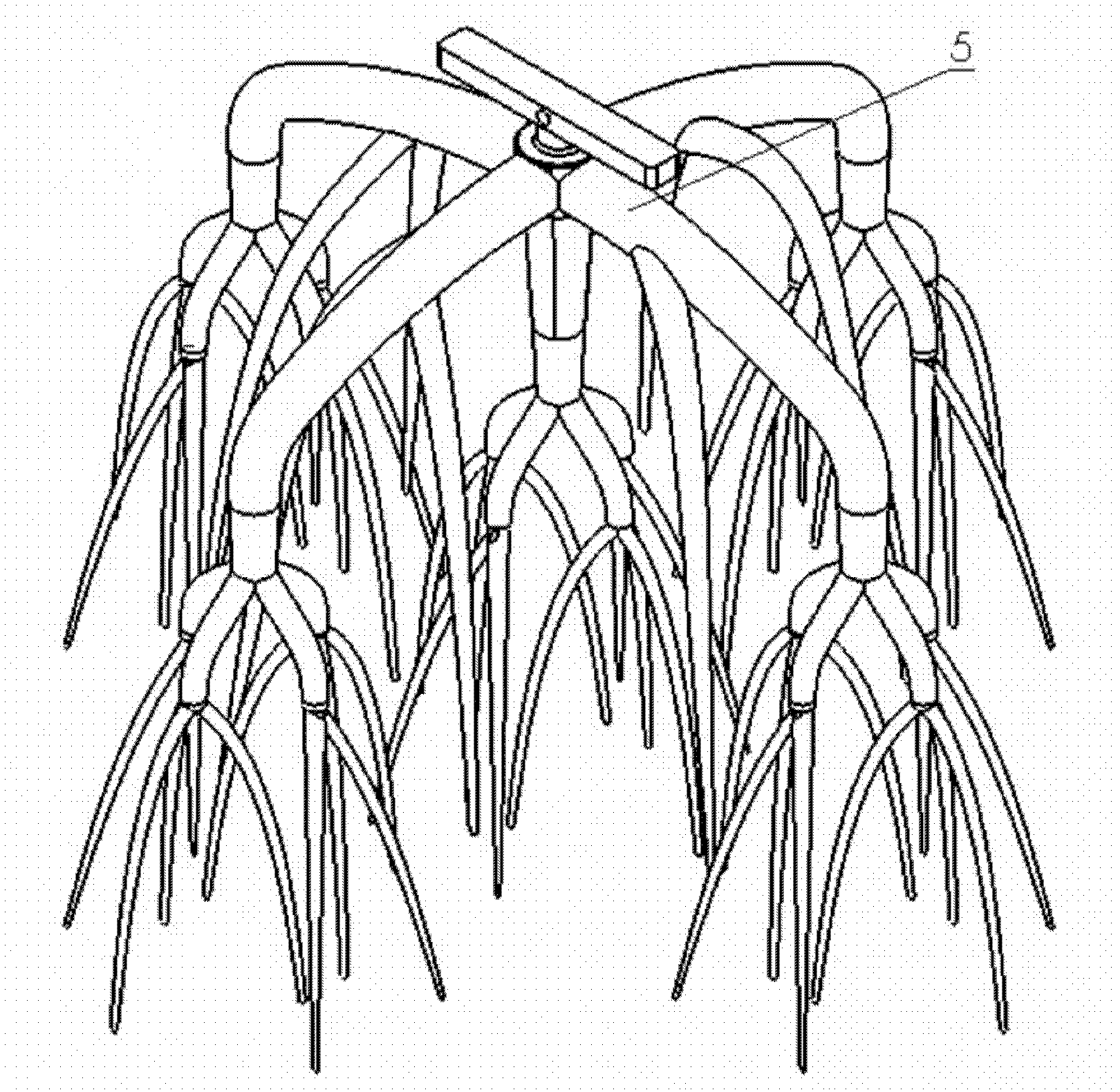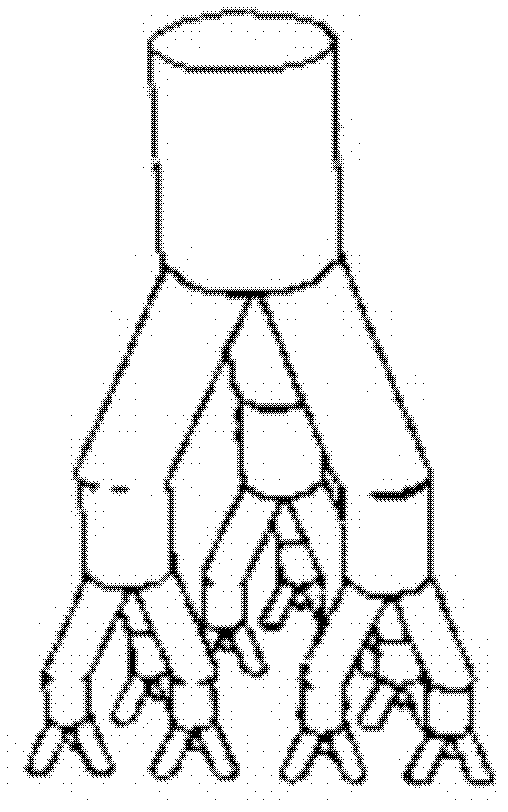Method for preparing complex organ precursor with branch vessel network
A branch and network technology, applied in prosthetics, medical science, etc., can solve the problems of no-channel differentiation of blood vessels, uneven distribution, low similarity, etc., achieve excellent biocompatibility, overcome the surface and internal structure of three-dimensional stents The effect of simplicity and excellent mechanical properties
- Summary
- Abstract
- Description
- Claims
- Application Information
AI Technical Summary
Problems solved by technology
Method used
Image
Examples
Embodiment 1
[0041] Embodiment 1: 1) adopt stainless steel material to prepare three-layer shell mold and bottom mold, and described shell mold surface is spherical, adopts polytetrafluoroethylene material to prepare double-layer branch mold with rapid prototyping method; 2) prepare fibrinogen solution, Inject a small amount of mixture of gelatin / fibrinogen and endothelial cells into the combined mold with a cell density of 1×10 7 1 / mL, inject thrombin solution (20IU / mL) to make the cell / natural polymer material layer form the bottom stable structure; 3) inject the mixture of gelatin / fibrinogen, endothelial cells and smooth muscle cells into the composite mold, and the cell density is 1×10 7 cells / mL, adding hepatocyte growth factor (HGF0.5ng / mL), human platelet-derived growth factor (BB or PDGF-BB 50ng / mL), transforming growth factor β1 (TGFβ1 10ng / mL) and basic fibroblast growth Factor (b-FGF 2.5ng / mL). Make the cell natural polymer material evenly distributed, inject thrombin solution...
Embodiment 2
[0042] Embodiment 2: 1) adopt silicon rubber material to prepare double-layer shell mold and bottom mold, described shell mold surface is ellipsoid, adopt PLGA material to prepare double-layer branch mold with rapid prototyping method; 2) prepare fibrinogen solution, in Inject a small amount of mixture of gelatin / fibrinogen and adipose-derived stem cells into the combination mold, and the cell density is 1×10 7 cells / mL, add endothelial cell growth factor and inject thrombin solution (20IU / mL) to make the cell / natural polymer material layer form the bottom stable structure; 3) prepare fibrinogen / endothelial cell mixture containing 1% paclitaxel, cell density 1×10 6 pcs / mL, poured into the combination mold, inject thrombin solution (20IU / mL) to make the cell / natural polymer material layer form an upper stable structure; 4) remove the shell mold and branch mold together, and peel off layer, recombine the molds, inject the mixture of gelatin / fibrinogen and adipose-derived stem c...
Embodiment 3
[0043] Embodiment 3: 1) adopt polytetrafluoroethylene material to prepare three-layer shell mold and bottom mold, described shell mold is the irregular shape of similar organ surface, adopts polyurethane material to prepare branch mold with rapid prototyping method; 2) preparation 1% Collagen / endothelial cell mixture in sodium citrate (cell density 1 x 10 7 cells / mL), poured into the combination mold, and placed at 37°C for 10 minutes to stabilize the structure of the collagen / endothelial cell mixture; 3) Remove the shell mold and the branch mold together, and take the first shell mold and the second shell mold. Buckle the shell mold back onto the bottom mold, prepare a polylactic acid / isopropanol solution with a concentration of 30%, add 30% sodium citrate, stir evenly, pour it into the peripheral gap left by the third shell mold, Use the PBS extraction method to form the inner layer of synthetic polymer material shell; 4) buckle the first layer of shell mold back on the bott...
PUM
 Login to View More
Login to View More Abstract
Description
Claims
Application Information
 Login to View More
Login to View More - R&D
- Intellectual Property
- Life Sciences
- Materials
- Tech Scout
- Unparalleled Data Quality
- Higher Quality Content
- 60% Fewer Hallucinations
Browse by: Latest US Patents, China's latest patents, Technical Efficacy Thesaurus, Application Domain, Technology Topic, Popular Technical Reports.
© 2025 PatSnap. All rights reserved.Legal|Privacy policy|Modern Slavery Act Transparency Statement|Sitemap|About US| Contact US: help@patsnap.com



